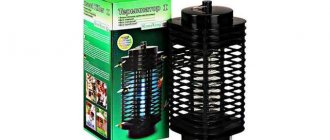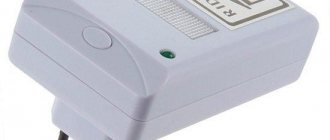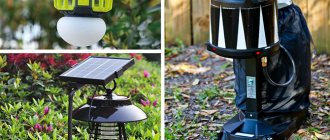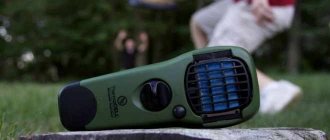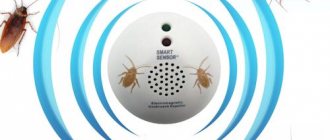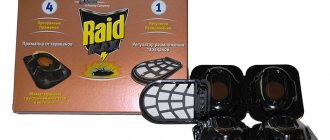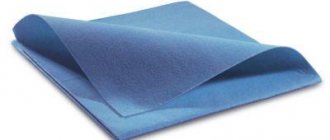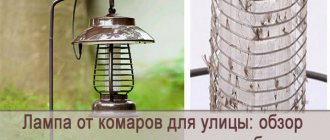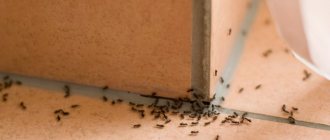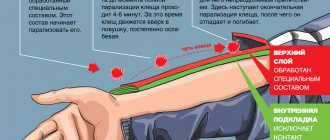Mosquitoes cause a lot of discomfort with their buzzing and biting. In addition, they can be carriers of infectious and parasitic diseases. However, in the summer season it is impossible to completely eliminate contact with them. Even if you take great care.
Special traps are designed to cope with hordes of insects.
The principle of their operation is simple. The device contains a source that attracts mosquitoes. This can be carbon dioxide, water, propane, ultraviolet lamp or heat. Bloodsuckers fly towards an attractive stimulus, but can no longer get out, where they die from exposure to excessive concentrations of carbon or other gas (for example, propane), electric current and other factors. Does a lamp help against mosquitoes?
Does a lamp help against mosquitoes?
Review of popular models, rating, operating principle. Is it worth taking?
netkomaram.ru
Open ›
You can also make mosquito traps with your own hands. Next, we will look at what types of devices there are, which devices are the most popular, and how to choose the right model.
Types of traps and their brief description
There are at least 5 types.
Heat traps
These are massive and heavy devices that emit a lot of heat. Considering the peculiarities of sensory perception in insects, they are more willing to fly to a source of pronounced heat than to a person. Where bloodsuckers meet their fate.
Go to website
Where can I put it? The dimensions of the units do not allow installation in a small house. They are suitable for large houses or summer cottages. They have a decent range of action, so they effectively cope with even a large number of pests.
Pros:
- Complete security.
- Environmentally friendly.
Minuses:
- High price. Up to several tens of thousands of rubles.
- Significant dimensions. Therefore, it will not be possible to install the unit in a house or city apartment.
Water traps
The principle of their operation is based on the release of large amounts of carbon dioxide. The solution releases CO2, which is what attracts mosquitoes. They are no longer able to get back out, so they remain in the water and die. The mesh installed on the outer sides of the device does not allow insects to fly back.
Where can I put it? There are various models, different both in size and cost. Models of this type can be installed anywhere. The main thing is to choose correctly.
Pros:
- Ease of use.
- Environmentally friendly.
- Complete safety for humans and pets.
- Relatively low cost. Such devices cost 10 or more times less than thermal ones.
Minuses:
- Difficulties in searching. Finding models within Russia is not easy.
- The risk of running into a low-quality product due to the abundance of offers on foreign websites.
Carbon dioxide traps
They emit large amounts of CO2 during their operation. Mosquitoes falsely mistake the gas for human exhalation and fly to the stimulus. Once the insects get inside, they receive a lethal dose of carbon dioxide and die within minutes. The CO2 concentration is high, but not so high as to harm a person, the user or his pets or household members.
Where can I put it? Anywhere, if size allows. But from a safety point of view, it makes sense to place them outside to avoid developing symptoms of mild CO2 poisoning.
Pros:
- Low cost.
- Highly effective against bloodsuckers.
Minuses:
- Not universal. It is not recommended to install it at home.
- You will need to constantly change carbon dioxide cylinders. They are inexpensive, but it is almost impossible to find consumables in Russia and the post-Soviet countries of Ukraine, Belarus, and Kazakhstan. Unless you order abroad.
Propane devices
About the same. Only instead of carbon dioxide, a substitute is used - propane and a special attracting component. You can find propane at almost any gas station. There are no problems finding consumables. But such units are expensive. Up to several tens of thousands of rubles.
Where can I put it? On the street. Because propane in high concentrations is toxic to humans and animals.
Pros:
- Highly effective in controlling mosquitoes.
- Ease of searching for consumables.
Minuses:
- Significant cost.
- Non-universal character. It can only be placed outdoors due to the risk of poisoning.
Ultraviolet models
There are several types. Some attract insects using ultraviolet radiation. In others, ultraviolet light speeds up the reaction and causes the release of carbon dioxide, which attracts insects. As soon as the bloodsuckers get inside and sit on a special grill, they receive a powerful discharge of electricity that kills them on the spot.
Where can I place it? Depends on size. Small models are suitable for a home and a small area. Large ones - outside the premises.
Pros:
- Low cost compared to thermal and propane models.
- High efficiency.
Cons: none as such.
Standing apart are homemade street and home mosquito traps made from bottles and improvised means. They are not as effective as professional devices, but they are an order of magnitude or even several orders of magnitude cheaper. It's a matter of personal preference.
Harm from annoying mosquitoes
No matter how small and harmless a mosquito may seem, the harm and danger from it is very great.
Let's look at the main reasons why you should fight mosquitoes and try to minimize the likelihood of their bite.
- Mosquitoes bite not only healthy people and animals - they can get the blood of an infected patient for their dinner. In this case, there is a high probability that after biting a healthy person, he can become infected with the same disease. Mosquito bites transmit diseases such as fever, helminthiasis, tularemia, malaria, etc.
- Mosquito bites can cause severe allergic reactions, which are accompanied by redness of the skin, blisters and even wounds at the site of the bite.
- After a bite, there is always a reaction to saliva, which the female secretes into the wound to thin the blood. It lies in the fact that the bite site is very itchy and itchy for several days, which leads to severe discomfort, especially if it concerns small children.
DIY traps
There are at least 3 recipes for homemade traps.
From a plastic bottle
The device will require a plastic one and a half liter bottle and several products.
The neck needs to be cut off (approximately to the middle). Pour 50 grams of sugar and dry yeast into an empty container. Pour lukewarm water (small glass). Then mix thoroughly. Insert the neck with the cork down, and cover the bottle with a thick cloth. After which you need to leave the device for several days for the fermentation process to occur.
A DIY trap made from a plastic bottle should be placed in the area that needs to be protected from mosquitoes. After a week it will have to be replaced as the effect will wear off.
Sticky homemade trap
To make it you will need a small cardboard tube. For example, from toilet paper. Medium weight paper is required. A narrow tape is cut from it, which will be used to wrap the cardboard sleeve. Next, prepare a sticky mixture that attracts mosquitoes. To make it you will need the following ingredients:
- rosin (150 g);
- castor oil (120 ml);
- conifer resin (250 g);
- honey (40 ml);
- wax (20 g);
- sugar syrup (100 ml);
- sweet apple jam or any other (120 g).
These substances can be mixed in any order. Next, you need to saturate the paper and wrap it around the sleeve. Hang the homemade device in the required place. The trap lasts for a week or less. Depends on the group of insects.
Homemade device with vegetable oil
The recipe is similar to the method described first. Only instead of yeast and sugar they use vegetable oil. It is enough to cut the bottle, grease the edges with sunflower oil and place the trap in a visible place. Where there are the most bloodsuckers.
These homemade methods give a temporary effect. They cannot compete in efficiency with professional devices.
Where to install the shredder?
There is nothing complicated about installing a portable gas trap for insects; you can do it yourself. Before installing this device outdoors, it is necessary to determine the place where the largest concentration of mosquitoes is located.
It must be placed between the place where they breed (high grass, pond, bushes) and the place where people are. In this case, the insects are destroyed before they even reach you.
The distance at which the trap should be placed is about 10 meters from a crowd of people. It is also necessary to take into account the direction of the wind.
The device should be placed so that the wind blows the gas towards the mosquito habitat.
If your site is not on a flat surface, it is better to choose a hill to place the trap.
Bloodsuckers do not like sunlight, so it is better to place the device in the shade. And also for the best operation of the device, it must be installed on a level place without tall grass, so that the gas can spread unhindered around the area.
The trap is designed to withstand a variety of weather conditions, but the automatic watering system may damage it if water enters the side of the trap.
The smartest system tested.
— when the power is turned on, the ISS releases a portion of gas and begins to heat the body to a temperature of 35-40 degrees within 2 minutes
- then the fan is turned on for 1.5 minutes, which is designed to suck in mosquitoes that were attracted by the heated housing and a portion of carbon dioxide.
— after this, a portion of gas is released, the housing begins to heat up and a new cycle is repeated.
The rest of the traps operate linearly and constantly - the fan is constantly spinning, gas is constantly flowing out, etc.
Elimination by mechanical means
.
The smallest category that includes devices that do not use ultrasonic repellent technology. Sticky tapes, electric shock rackets, and imitations of wasp nests are used relatively rarely, since their effectiveness is lower than that of ultrasonic devices. Sources
- https://stroy-podskazka.ru/komary/ultrazvukovye-otpugivateli/
- https://otzverey.ru/otpugivateli-komarov/
- https://more-vsego.net/sredstva-ot-komarov-na-ulice-bolshogo-radiusa-dejstvija-top-14-luchshih.html
- https://bestvix.ru/turizm-i-otdyh/luchwie-otpugivateli-komarov/
- https://prusakam.net/ultrazvukovye-otpugivateli-komarov/
Are electric exterminators effective against insects?
Electric lamp exterminators actually provide the ability to kill flying insects indoors quite effectively, as long as the device is chosen based on the size of the area that needs to be protected.
With constant updating of the bait and a small number of cockroaches, the electric exterminator-house also shows excellent results, but a significant effect of reducing the population may not appear immediately, but only after a few days.
But against ants, this electronic trap, as a rule, turns out to be not very effective, since it destroys only working insects that are looking for something to profit from, while the queen in the anthill actively continues to lay new larvae.
It is also necessary to take into account that if there are a significant number of midges, for example, on the veranda in the evening, even a very powerful lamp-based electronic exterminator will not be able to cope, and you will still be bitten by mosquitoes - in this case, it can be useful to combine electronic exterminators with repellent drugs or products, for example , anti-mosquito coils.
Bedbug Executioner: reviews, product description and instructions
As for electronic fumigators, in general, they do a good job of their main task, destroying flying insects indoors. And if you turn on this fumigator in a closed cabinet, it can help get rid of not only moths, but also their eggs. But fumigators most often have almost no effect on house ants, fleas, cockroaches and, especially, bedbugs.
How to choose the right repeller?
The repeller can work with ultrasound or be sonic. If you choose a specific device, then you need to take into account the area in which it will be used. Although a key fob repeller or mobile devices can be used anywhere. To enhance the repelling effect, the correct combination of the type of protection and the power of the device is required. Cost can significantly influence the choice of device. But you don’t need to rely heavily on it, since high cost does not indicate the quality and efficiency of the device.
The most important characteristic of the choice is the operating radius of the device. The main thing is that the device works effectively at the required distance. In this case, there is no specific relationship between price and efficiency. We can only say for sure that the more expensive the device, the more attractive it will be in appearance.
At the same time, it is necessary to understand that the idea of using ultrasound against mosquitoes was very popular with numerous dishonest businessmen, who began to manufacture thousands of useless counterfeits for effective ultrasonic devices. Alas, it is almost impossible to really find out whether the device is working or not. Therefore, do not let yourself be deceived and purchase only high-quality mosquito protection devices!
Is ultrasound dangerous for humans?
Ultrasound in the dose supplied by animal and insect repellers is absolutely safe for humans. The human ear is simply not capable of perceiving or hearing it. We usually hear sound with a frequency ranging from 16 to 20 kHz, but ultrasonic waves are above our threshold of sensitivity. The vibration level of ultrasonic waves is usually almost 70 kHz.
Also, in addition to frequency, sound is measured in decibels. The human body is able to calmly perceive pressure up to 120 dB. While many repellers are rated at 100 dB, so they do not have a dangerous effect on the human body.
